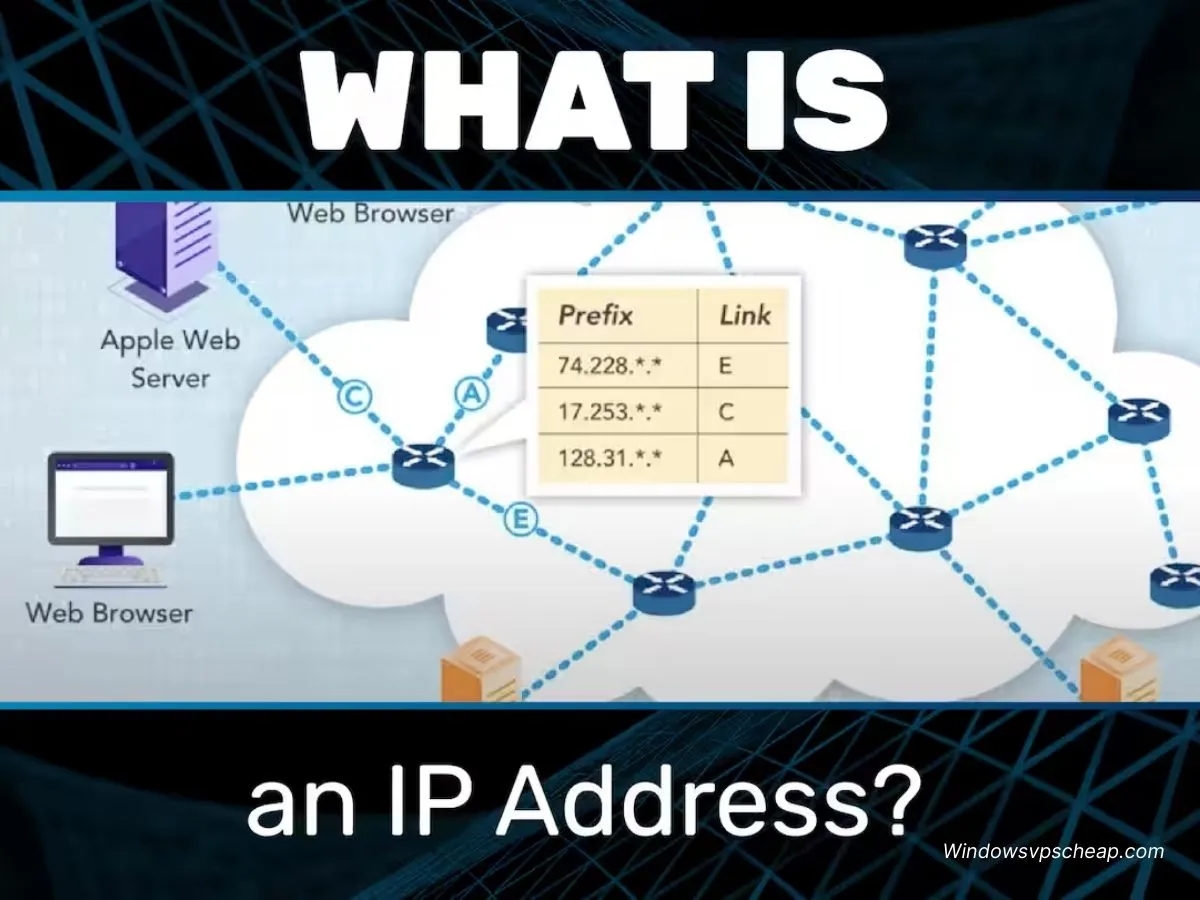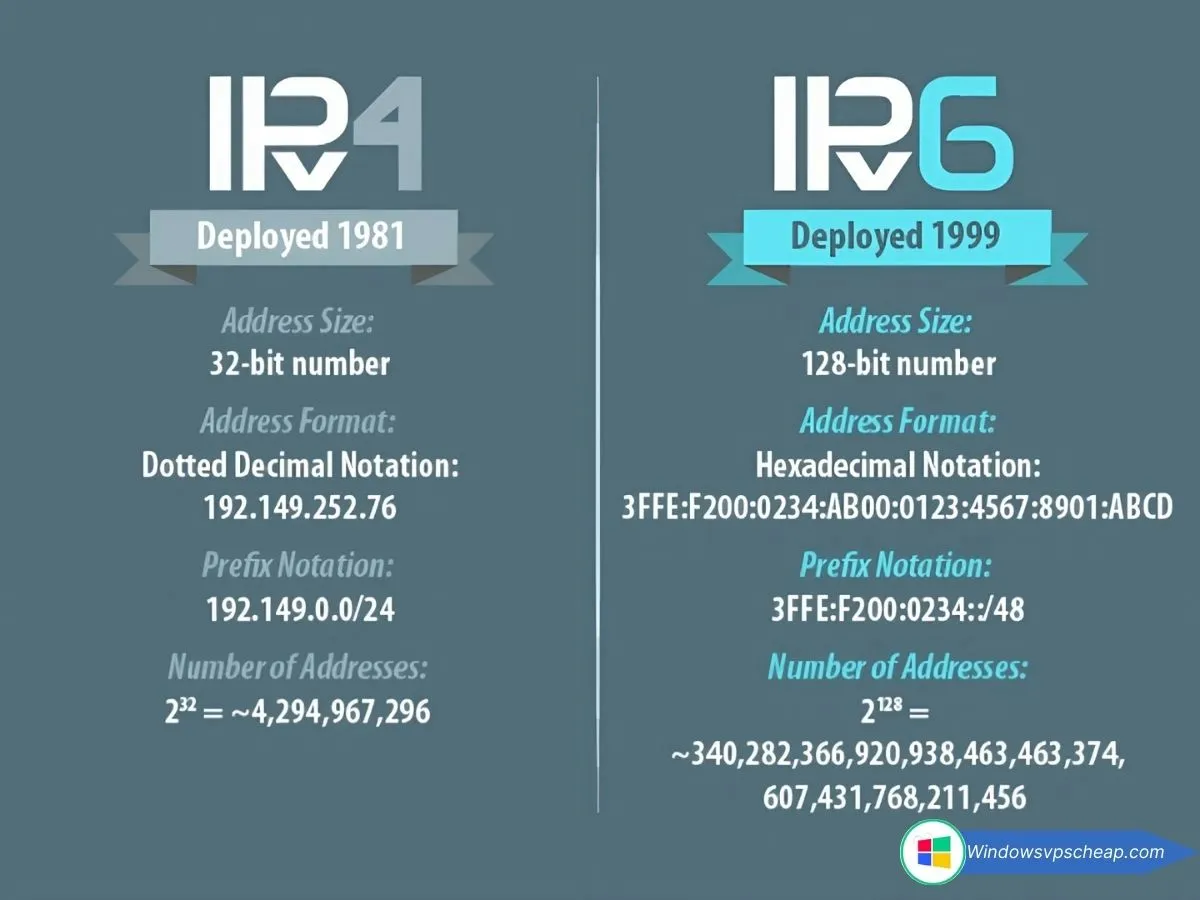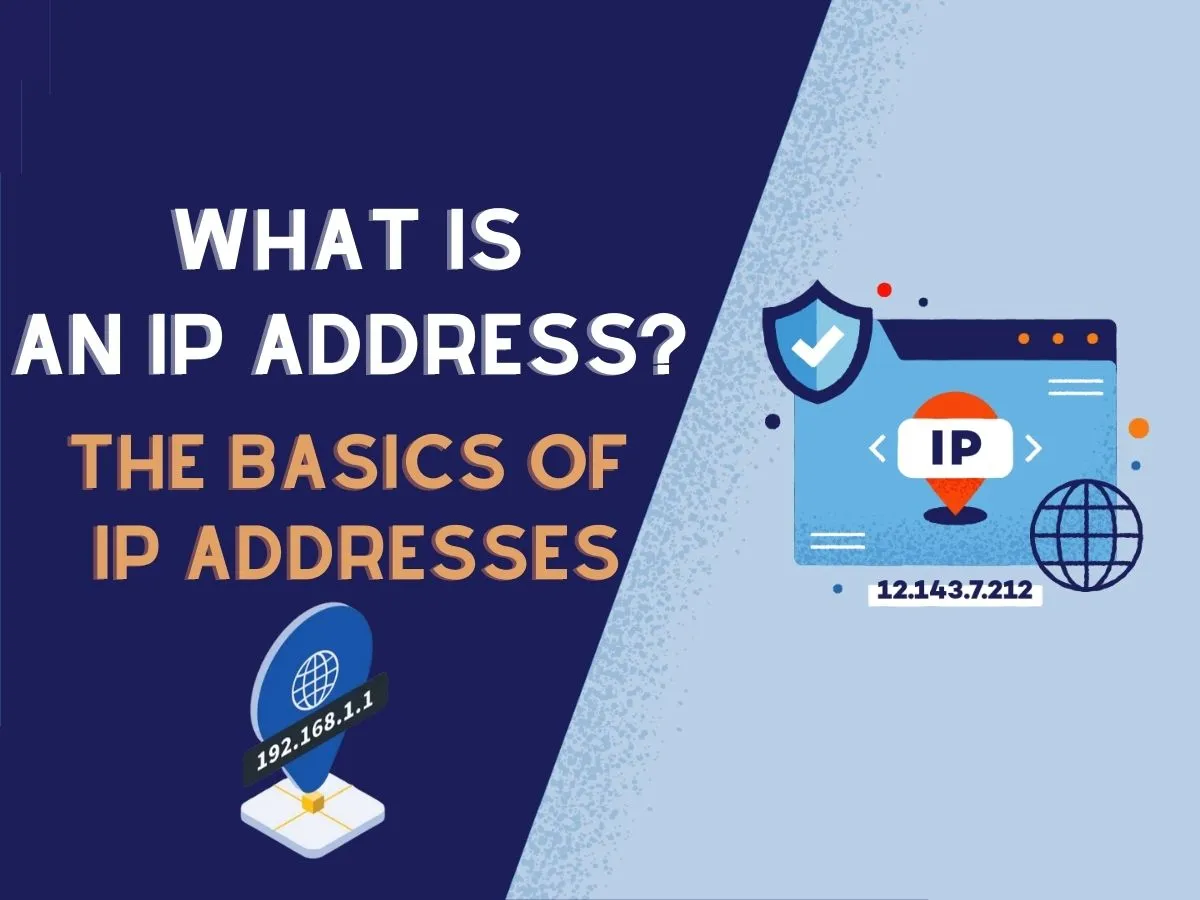In today’s digital age, the term “IP address” frequently appears in discussions about the internet and networking. But what exactly is an IP address? Why is it so crucial to our online activities? This article delves into the basics of IP addresses, explaining what they are and how they function. From enabling devices to communicate with each other to ensuring smooth data transfer across the globe, understanding IP addresses is essential for anyone navigating the digital landscape. Let’s explore the fundamental concepts behind IP addresses and uncover their pivotal role in modern communication.
Understanding IP addresses
What is an IP address?
An Internet Protocol (IP) address is a unique string of numbers separated by periods or colons that identifies each computer using the Internet Protocol to communicate over a network. Think of it like the address of your house. Just as the postal service needs your home address to deliver a package, computers use these addresses to send and receive data on networks.
An IP address can be quite technical, but in essence, it’s how devices find each other and communicate. In the world of computing, every device connected to a network (like the internet) needs an IP address. Your smartphone, laptop, tablet, and even smart fridge use IP addresses to connect and interact online. This concept is foundational to the internet and any local network.
A typical IP address could look something like 192.168.0.1 (for IPv4) or 2001:0db8:85a3:0000:0000:8a2e:0370:7334 (for IPv6). These numbers aren’t random; they follow a specific set of rules configured by the governing body of the internet, the Internet Assigned Numbers Authority (IANA).

Understanding what an IP address is will provide a deeper insight into how digital communication works. Much like a network of houses that can send mail to each other, devices on the internet need IP addresses to send data packets back and forth. This digital exchange lays the foundation for everything from web browsing to streaming videos and online gaming.
The purpose of IP addresses
The primary purpose of an IP address is twofold: to identify a device and to provide its location within a network. In simpler terms, it works much like the combination of a telephone number and a mailing address.
First, it serves as an identifier. Just like a name, it tells other devices who you are. This identifier ensures that when you request information, like a webpage, it knows to send the data back to your specific device and not another one within the same network. Simply put, it’s your digital ID card.
Second, it provides location information. This helps to pinpoint where you are located within the network. By knowing your location, data packets, which can be thought of as digital letters, know the exact routes to take to get to you. These packets travel across various networks and servers, taking the most efficient path calculated by algorithms.
Without IP addresses, the internet would be chaotic, and directed communication between devices would be nearly impossible. Imagine trying to send a letter without a home address—absolute mayhem!
Types of IP addresses
Breaking down the types of IP addresses helps provide a clearer picture into their functionality and scope. Each type serves a different purpose and plays a specific role in networking.
- IPv4 and IPv6 Addresses:
- IPv4: The older and most widely used format. It consists of four sets of numbers ranging from 0 to 255, separated by periods (e.g., 192.168.1.1). IPv4 is a 32-bit system, allowing for around 4.3 billion unique addresses.
- IPv6: Developed to address the shortage of IPv4 addresses. It uses a 128-bit system and includes eight groups of four hexadecimal digits (e.g., 2001:0db8:85a3:0000:0000:8a2e:0370:7334). The vast address space in IPv6 (340 undecillion addresses) ensures virtually unlimited unique addresses.
- Public and Private IP Addresses:
- Public IP addresses are globally unique and are assigned to devices for communication over the internet. Internet Service Providers (ISPs) assign public IP addresses.
- Private IP addresses are used within private networks. They are not routable on the public internet and are often used in local area networks (LANs), such as at home or in the office.
- Static and Dynamic IP Addresses:
- Static IP addresses are manually configured and remain constant. Businesses often use static IPs for hosting websites or services.
- Dynamic IP addresses are assigned by Dynamic Host Configuration Protocol (DHCP) servers and can change periodically. Most home networks use dynamic IP addresses due to ease of management.
- Unicast, Multicast, Anycast, and Broadcast Addresses:
- Unicast: Identifies a single device on a network.
- Multicast: Identifies a group of devices, where data is sent to multiple destinations simultaneously.
- Anycast: Identifies the nearest device in a group, optimizing routing.
- Broadcast: Identifies all devices on a network segment.
- Loopback and Default Gateway Addresses:
- Loopback (127.0.0.1 for IPv4, ::1 for IPv6): Used for internal testing of a device.
- Default Gateway: The IP address of a router that forwards data to other networks.
Understanding these types is essential for anyone working with networks, ensuring optimal configuration and communication efficiency.
How IP addresses work
Network addressing
Network addressing is the process where IP addresses are assigned to devices in a network to ensure that data is correctly routed. Think of network addressing as assigning street addresses to houses in a city. Each house needs a unique address so that mail carriers know precisely where to deliver letters and packages.
- Unique IP Assignment: Each device on a network gets a unique IP address, ensuring no two devices have the same IP at any given time in the same network. This uniqueness avoids confusion and ensures accurate data delivery.
- Subnetting: Subnetting is like dividing a big city into smaller neighborhoods. It involves splitting a large network into smaller, manageable sub-networks, Subnetting helps improve network performance and security because it reduces broadcast traffic and confines potential network issues within a subnetwork.
- Network and Host Portions: Every IP address is divided into two parts: the network portion and the host portion. The network part identifies which network a device belongs to, while the host part specifies the exact device within that network. For example, in the IP address 192.168.1.1, if the subnet mask is 255.255.255.0, the network portion would be 192.168.1, and the host portion would be 1.
Communication and routing
Once devices are assigned IP addresses, they can communicate with each other. This communication process involves routing, which ensures that data reaches its intended destination.
- Data Packets: Data on the internet is broken down into smaller pieces called packets. Each packet contains a portion of the data and must have a header that includes source and destination IP addresses.
- Routing algorithms: Routing algorithms determine the best path for packets to travel across networks to reach the destination. Think of it as using a GPS to find the shortest or most efficient route when driving to a location.
- Routers: Routers play a crucial role in directing these packets. When a packet arrives at a router, the router reads the destination address and forwards the packet toward its next hop, continuing this process until the packet reaches its destination.
IP routing involves several key steps:
- Source device: Checks whether the destination is local or remote by comparing its own IP address and subnet mask with the destination address.
- Default gateway: If the destination is remote, the packet heads to the default gateway, usually the local router.
- Intermediate routers: Each router along the path examines the destination IP, and using routing tables, forwards the packet closer to its target.
- Destination device: Once all packets have arrived, they are reassembled to form the complete data.
IP address allocation
IP address allocation is the systematic process of distributing IP addresses to various entities and devices. This ensures that each device gets a unique and valid address.
- IANA and RIRs: The Internet Assigned Numbers Authority (IANA) oversees global IP address allocation and delegates large blocks of IP addresses to Regional Internet Registries (RIRs). The RIR responsible for IP address allocation in the United States is ARIN (American Registry for Internet Numbers).
- ISP Allocation: ISPs receive large blocks of IP addresses from ARIN and allocate them to their customers. This can be done dynamically using DHCP or statically for specific purposes.
- Dynamic vs. Static Allocation:
- Dynamic: Most residential users receive dynamic IP addresses. These addresses change periodically and are managed by DHCP servers.
- Static: Businesses or services that require constant access, like web servers, are more likely to use static IP addresses.
- IPv4 Exhaustion and IPv6 Transition: Given the limited number of IPv4 addresses, the shift to IPv6 has become imperative. While IPv4 uses a 32-bit address space, IPv6 employs a 128-bit address space, promising an almost unlimited supply of IPs.
IP address structure
IPv4 address structure
An IPv4 address is a 32-bit number divided into four octets (eight-bit sections). Each octet is displayed as a decimal number ranging from 0 to 255, separated by periods. Think of it like four separate rooms in a house, each with its designated number.
For instance, in the IPv4 address 192.168.1.1:
- 192 is the first octet
- 168 is the second octet
- 1 is the third octet
- 1 is the fourth octet
Network and Host Identifiers:
- Network Portion: Specifies the specific network to which the device belongs. With the aid of subnet masks (e.g., 255.255.255.0), this portion can be differentiated.
- Host Portion: Specifies the exact device within the network. The above example (192.168.1.1) with a /24 subnet mask means the first three octets (192.168.1) denote the network, while the last octet (1) identifies the host.
Address Classes:
IPv4 addresses are divided into different classes based on the leading bits:
- Class A: Starts with 0, range from 1.0.0.0 to 126.0.0.0. Used for large networks.
- Class B: Starts with 10, range from 128.0.0.0 to 191.255.0.0. Suitable for medium-sized networks.
- Class C: Starts with 110, range from 192.0.0.0 to 223.255.255.0. Ideal for small networks.
- Class D: Starts with 1110, reserved for multicast.
- Class E: Starts with 1111, reserved for experimental use.
IPv6 address structure
IPv6 addresses use a 128-bit system, making them significantly more complex yet versatile than IPv4. An IPv6 address is displayed as eight groups of four hexadecimal digits (e.g., 2001:0db8:85a3:0000:0000:8a2e:0370:7334), which are separated by colons.
Network and Interface Identifiers:
- Network Prefix: The first 64 bits represent the network prefix, which is used for routing.
- Interface Identifier: The last 64 bits uniquely identify a device within that network.
Types of IPv6 Addresses:
- Global Unicast: Routable on the internet, starting with prefixes like 2000::/3.
- Link-local Unicast: Only valid within the local network segment, starting with fe80::/10.
- Unique Local Unicast: Used within a site or an organization, similar to private IPv4 addresses, starting with fc00::/7.
The vast address space provided by IPv6 addresses not only resolves the depletion problem of IPv4 addresses but also introduces features for more efficient routing and security.

Examples of IP addresses
Understanding IP addresses is clearer with concrete examples. Here are a few scenarios illustrating how different IP addresses work:
IPv4 Examples:
- Public IP Address: When you access the internet from home, your ISP might assign you a public IP like 203.0.113.5. This address is unique on the internet.
- Private IP Address: Within your home network, your router assigns private IPs to devices. For example, your laptop might have 192.168.0.5, while your smart TV could have 192.168.0.10.
- Static IP Address: A business website hosted on a server might have a static IP like 198.51.100.123, ensuring that it remains constant and reliable for user access.
IPv6 Examples:
- Global Unicast Address: An IPv6 global unicast address, accessible over the internet, could be 2001:0db8::1:24.
- Link-local Address: A device’s IPv6 link-local address on a local network might be fe80::1a2b:3c4d:5e6f:7g8h.
These examples show the diverse application of IP addresses across different scenarios and environments, highlighting their essential role in networking.
Importance of IP addresses
Internet connectivity
Without IP addresses, the internet as we know it would cease to function. They are the heart of internet connectivity.
- Routing and Access: IP addresses enable routers to know where to send data packets, ensuring every piece of information reaches its intended destination.
- Domain Name System (DNS): When you type a website’s name like www.example.com, DNS translates that into the corresponding IP address, directing your request to the correct server.

>>> You may be interested in: What is RAM? Understanding Its Significance and How to Choose the Best RAM
Device identification
Every device needs a unique IP address to communicate effectively.
- Uniqueness: Just like every home needs a unique postal address, every device needs a unique IP to avoid data delivery chaos.
- Simplifies Troubleshooting: Network administrators identify and troubleshoot issues more efficiently by referencing IP addresses, ensuring stable and secure communications.
Network security
IP addresses play a key role in securing networks, preventing unauthorized access and attacks.
- Firewall: IP addresses help define firewall rules, blocking malicious traffic and access attempts.
- Geolocation and Access Control: IP addresses can determine the origin of a network request, enabling geolocation-based access control to restrict or allow access based on geographic location.
IP address vs. domain name
Though often used interchangeably, IP addresses and domain names serve different purposes.
- IP Addresses: These are numerical labels used to identify devices on a network. Machines use IP addresses to route data.
- Domain Names: These are human-readable names like www.example.com that we use to identify websites. The DNS translates domain names to IP addresses.
Comparison Table:
| Aspect | IP Address | Domain Name |
|---|---|---|
| Format | Numeric (e.g., 192.168.1.1) | Alphabetic (e.g., www.example.com) |
| Purpose | Machine Identification | Human-Friendly Web Address |
| Accessibility | Direct Communication | Needs DNS Translation |
Finding your IP address
Using Command Prompt (Windows)
- Open Command Prompt:
- Press “Windows Key + R” to open the Run dialog.
- Type
cmdand hit Enter.
- Find IP Address:
- Type
ipconfigand press Enter. - Look for the section under “IPv4 Address”.
- Type
Using Terminal (Mac/Linux)
- Open Terminal:
- On Mac, use Spotlight by pressing “Command + Space” and type “Terminal”.
- On Linux, you can access it from the application menu or by pressing “Ctrl + Alt + T”.
- Find IP Address:
- For Mac, type
ipconfig getifaddr en0. - For Linux, type
ifconfigorip addr.
- For Mac, type
Using Online Tools
- Visit Websites:
- Websites like checkproxy.org can instantly reveal your public IP address.
- Security Considerations:
- Ensure you use reputable sites to avoid exposing your IP to malicious actors.
Conclusion
IP addresses are fundamental to the seamless operation of the internet and local networks. They serve as unique identifiers that enable devices to communicate and exchange data. From ensuring internet connectivity to providing network security, IP addresses are integral in various aspects of the digital world.
Understanding the different types and roles of IP addresses can demystify many complex concepts in network technology. As the world shifts towards more connected devices, the evolution from IPv4 to IPv6 becomes crucial to accommodate the expanding digital landscape.
Whether you’re setting up a home network, running a business, or simply browsing the web, IP addresses impact your online experience. Knowing how to find your IP address and understanding its significance can empower you to navigate the digital realm with greater confidence and security.
In summary, mastering the concept of IP addresses is not just for tech experts—it’s a valuable expertise that enhances our interaction with the interconnected world.
CATEGORY:Knowledge

